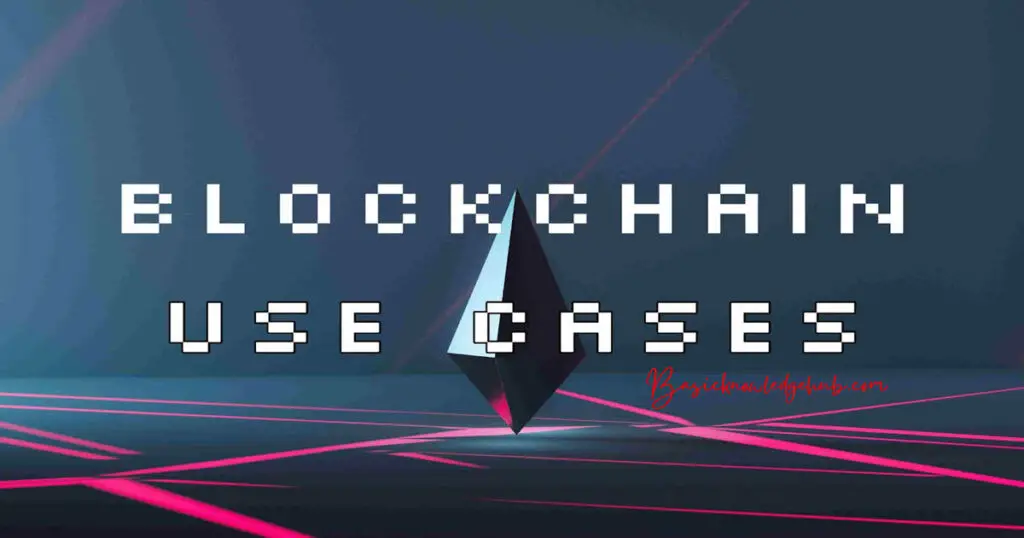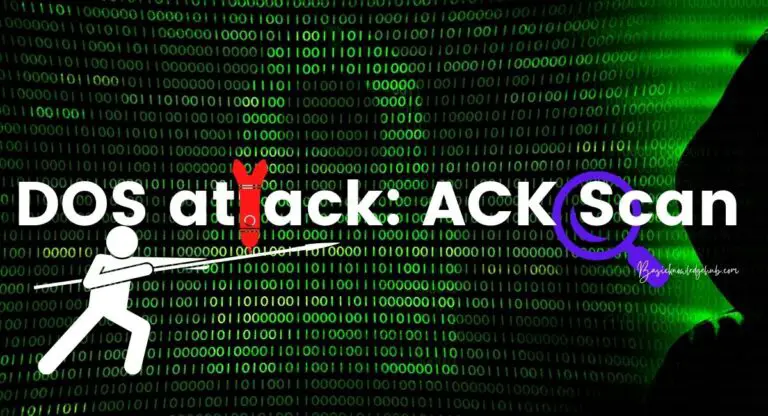Blockchain use cases
Want to know about blockchain use cases? How does it work and what are the fundamentals of the technology? Learn how you can use the blockchain to improve your business and other applications. See how blockchain is changing the industries and forcing traditional systems to re-think. Learn everything you need to know about blockchain and its use cases.
Blockchain technology is booming nowadays with new applications and other technologies depending on it. Not only technology, but whole industries are depending on the blockchain. Bitcoin and other cryptocurrencies are depending on the success of blockchain. Specifically, cryptocurrencies are depending on the DLT (Distributed ledger technology).
The blockchain allows users to share a database that is filled with entries. We can understand it as thousands of people keeping track of when a new bitcoin is generated. This means people can’t create new bitcoins or counterfeit them in any way. And if a new bitcoin is added, then it’s checked on everyone’s database/records.

In this article, we are going to see what is blockchain and why it’s being used currently. If you already know about blockchain then you can skip the first section. Since there we are going to discuss what is blockchain technology and understand it.
What is blockchain?
Blockchain in technical terms is a shared and secured way of recording every transaction along with tracking assets such as NFTs in the business network. Now assets in the physical world are property, cars, houses, cash, or intangible such as copyrights, patents, etc. However, in the world of blockchain, assets are cryptocurrencies, NFTs, security tokens, and more. If you are not familiar with these terms then do not worry since we will look at them later in the article.
The problem with virtual assets is that government does not enforce forgery protection seriously. Imagine you buy a bitcoin and someone makes a copy of and it flips the fake one for a profit. You come to know about this months after since there was nobody to tell you. Here comes blockchain technology, which helps in protecting virtual assets from forgery and more.
This becomes more important for businesses since we all know the biggest asset nowadays is information. The more information a business has, the more edge they have to cover the competition. Here blockchain plays a huge role in delivering the information immediately and with complete transparency. Along with it, the information can only be accessed by network members which are authorized by the business/organization. Thus protecting critical information from hackers and the competition. Any blockchain network helps us by producing, tracking, payments, accounts, and more. Each network member will share a single instance of the record and everyone should have the same record. Even if some network members change their records, it is not possible to change them in every record. This is revolutionary since there was no way to implement this idea practically with millions of network members and their records.
Key elements of a blockchain
Here we are going to see what is key elements which make up the backbone of blockchain. Here we will take an in-depth look at the working of blockchain as a whole which will provide you with a good idea.
Distributed ledger technology
As the name suggests, the blockchain is distributed amongst all the network members and everyone has to participate to be a part of it. All the participants keep a record on their end of all the transactions which is updated frequently. Now whenever any changes are made in the network, all the records are checked on all the records across all the participants. Only after successfully checking and confirming the records any changes are made.
This is mainly where people earn bitcoin by performing all of these calculations and the participant who completes it first is rewarded with bitcoin.
NOTE: All the transactions are only recorded once in the participant’s database. This removes the problem of data duplicates which are found in every traditional business network making them expensive.
Immutable records
As we have seen that all of the participants keep their records, this means changing anyone or some of them will not affect the network. And in a large network, making changes in millions of local databases at the same time is impossible. This is why blockchain networks are tamper-resistant, given that the network has a large number of participants.
Now if there’s an error or problem with any transaction, then a new transaction will be made to correct it. And both of them will be visible and recorded to all the participants.
Smart contracts
Blockchain networks are really fast and it is due to a set of rules, these are known as smart contracts. This set of rules is recorded on the blockchain and executed automatically.
Smart contracts mainly define the different terms for travel insurance to be paid, conditions for corporate bind transfer, and more. These rules can not be changed by anyone since it’s a part of the blockchain network.
How blockchain works
Here we will be seeing how the blockchain works for any general network and you will get a fair idea behind the working. If you did not go through the previous section, then we would suggest going back. Since the previous section covered the key elements which are needed for blockchain to work.
As each transaction occurs, it is recorded as a “block” of data
Till now we know that in blockchain networks, all the transitions as recorded and visible to everyone. These transactions are known as a “block” and the combinations of these blocks are known as a “blockchain”.
A block will record all the information regarding the transactions which is intangible. Meaning once the transaction is made over the network, it can not be changed and a new transaction must be made to correct it. The information stored includes data such as who made the transaction, when, how much, conditions involved, and even what. All of the information is visible to everyone in the network, thus making it transparent. See the google case study of Blockchain.
Each block is connected to the ones before and after it
Now each block is connected to the next and the previous block, making a chain of these blocks. This is where the technology got its name and the idea behind it has been around for a while. These blocks are used to confirm the exact time and sequence of every transaction.
All of the blocks are linked securely with one another, and prevent a new block from being inserted in between the existing one. This is why nobody can tempter with the blockchain network and businesses rely on it.
Transactions are blocked together in an irreversible chain: a blockchain
The blocks linking together automatically to form a chain is why the entire network is so secure and trusted. This rendered blockchain helps with temper protection and delivering immutability to the whole network.
This is perhaps one of the most critical key elements which make blockchain so reliable. Thus all the network members trust the blockchain and do not question the transactions made over the network.
Blockchain Use Cases
This is the most important section of the article since here we will be seeing the different use cases of blockchain. All of these use cases are currently used and do not include future ideas or concepts.
Use Cases in Banking & Finance
International Payments
This is the most popular and common use of blockchain technology currently since it makes transactions fast, secure, reliable, and tamper-proof. Traditional international payments are slow, unreliable, and prone to a lot of regulations.
This is why blockchain is preferred to make overseas payments since the entire system is automated and unregulated. Along with it, the transactions do not include any tax which saves up, in turn making the payments cheaper. Numerous businesses and retail clients benefit from the reduced cost and fast speed of transactions. This is why you hear about cryptocurrencies being used all over the world.
Capital Markets
The capital market is the part of any financial system which is responsible for raising capital/money for the business. Blockchain offers faster clearing, improved operations, consolidated audit trials, and more.
Many companies work around the idea of capital market improvement via blockchain. This brings a lot more capital for both businesses to align with other changes to the standard process.
Trade Finance
This is the heart of any business since any type of interruption will cost the business and makes the liquidation harder to manage. Traditional methods are often slow and involve a larger number of variables, making the whole process prone to interruptions. This is because a large number of transactions will generate a huge volume of documentation.
Here the blockchain provides businesses with the opportunity of streamlining this process along all borders which makes it faster and simpler. Businesses can do more transactions without having to deal with a large number of documents and the slow process.
Regulatory Compliance and Audit
The secure and tamper-protection nature of blockchain makes it a lot easy to account for and audit the transactions. This significantly reduces the chances for human error or tampering, maintaining the integrity of the process.
Also, the account records can not to tempered at any stage of the transaction, not even the owner. This practically removes the need for accounting and auditing since the whole process is automated.
Money Laundering Protection
We all know that with a large number of transactions, money laundering becomes an issue in the traditional systems. Blockchain combats this problem by empowering the record keepers also called “Know Your Customers”. This makes it a lot easy to verify the identity of businesses and clients.
Insurance
This uses the concept of “smart contracts”, we have seen this in the previous section. It allows businesses with managing the claims transparently and securely. All the contracts and claims are recorded on the blockchain making it impossible to tamper with them.
Peer-to-Peer Transactions
This is another very popular use case for the blockchain. Traditional P2P payment methods such as Venmo are not as secure and often charge fees for using them. Or the transitions may be limited to a certain geographic area which makes them less appealing.
Blockchain allows participants to jump all of these hurdles and make the whole process more secure, robust, transparent, and unregulated.
Use cases in Business
Supply Chain Management
Blockchain provides real-time tracking of the package/goods and changing hands in the network. This makes it much easier to manage a supply chain with the use of new transported goods tracking. This is a new dynamic way for businesses to track data and allocate newly arriver goods.
Healthcare
The Healthcare industry has a huge amount of data such as patients’ age, gender, medical history, allergies, medications, and more. This data needs to be accessed quickly, privacy-protected and should remain temper-free. This is very important since lives depend on this, making it a real problem.
Traditional systems are not able to keep up with the demand for new applications for this data. This is where Blockchain development comes into play, it provides the solution for all these problems. Medical devices are being developed which support blockchain technology, helping doctors and patients in the way.
Real Estate
This is a new area for blockchain use since there are a lot of fraud transactions in the real estate market. People do not sell/buy real estate quite frequently, but a lot of people do it. This makes a room for the blockchain to speed up the process and remove the problem of fraud. The whole process is transparent and secure like other applications.
Energy
Blockchain provides us with the solution for energy supply transactions which include metering, processing, billing, and clearing. The traditional process is not transparent and is often slow compared to blockchain. This can also solve the problem of asset management, renewable energy certificates, documenting ownership, and more.
Use cases in Other Industries
Financial Management and Accounting
We have already seen how the blockchain is changing businesses and financial management systems. However, the technology is still in the process of being adopted by organizations. This will protect the organizations & clients from financial fraud and provide impenetrable security.
Record Management
Blockchain is the perfect solution for record management and removes the problem of data redundancy. In traditional methods, the same data is kept at several different locations to verify the very expensive integrity. Also, traditional methods do not completely protect against duplicates, fraud activities, and more.
Cybersecurity
This is the biggest concern of the 21st century since hackers can get into the majority of the traditional systems. Blockchain is completely automated which makes it impossible to tamper with and remove the risk of a single point of failure. Along with it, blockchain also provides with end to end encryption and privacy.
Big Data
Blockchain provides us with its’ immutable nature which is very important in verifying the information stored. This has very large applications in the big data industry and provides other excellent tools for storing big data.
IoT
IoT is the biggest growing section in the IT industry with new applications every quarter. Blockchain helps with supply chain management by tracking the location and status of goods. Along with it, blockchain also provides asset tracking which monitors assets, and records activities, and outputs.
IoT is still developing and slowly becoming a part of our lives. Privacy and transparency will be the biggest issue that can be solved with the help of blockchain.
Summary
In the article, we saw what os blockchain is in a nutshell. And what are the different blockchain use cases in different industries? This should have provided you with a general idea of blockchain and its fundamental work. But if you want to know about specific applications, then we would suggest doing more research.
We should keep in mind that blockchain is still in its infancy stage when it comes to applications. The problem with the technology will not be the capabilities, but the adoption. Traditional systems such as financial systems do not want to use it. Since it will remove a majority of their role. The government also doesn’t want to use it. It will increase transparency and people will be able to keep track of the majority of things. People are more than happy to adopt new technology with a promising future, and this is what’s driving blockchain forward.


